|
|
I installed the "rebuilt" Oildyne pump in its new home today on the
front of the baggage bulkhead and it seems to be working
just fine so far (knock on fiberglass). I still have some pressure
decay tests to run and have yet to adjust the pressure switches, but
the pump puts out pressure in both directions, the relief valves are
set, the system is bled, the gauges work, and the landing gear go up
and down. Life is good!
Rebuilding the pump turned out to be no big deal. The main thing I
would advise it that when taking things apart, don't let the
internal springs and ball bearings - especially the ball bearings -
go bouncing across the shop floor; Disassemble the pump on a cookie
sheet or something. "Rebuilding" consists of just changing all the
O-rings, the poppet valves and springs, the suction screens, and the
grease seal between the pump and motor. On my ancient pump there
were only five O-rings to change plus two more for the new plastic
reservoir. None of the 28 y.o. O-rings or seals looked deteriorated
at all, but I changed them anyway. (I used Parker O-lube to install
the new O-rings). Also, there's a plastic (or rubber?) coupling
between the motor and pump which should be greased. You need to
remove the motor to grease the top side but, again, no big deal...
The check valve (poppet) bodies and spool piece should be gently
tapped out with a drift and small hammer after removing both 7/8"
hex nuts on either side.
After reassembly, with the reservoir empty, I first primed the pump
by adding fluid to a 12" piece of tygon tubing that slipped tightly
over the -4 AN outlet fittings. I squeezed the tubing a few times to
work out the air bubbles, and looked in the bottom of the empty tank
for any drips which would have indicated a leaking suction
ball-check valve. I did this on both the HP and LP sides with no
leakage noted. (There's supposed to be some "official" priming
procedure, but I don't have a copy.)
After filling the tank midway between the MIN and MAX lines, I ran
the pump "dead-headed" to check the relief valve settings. The pump
sounded good. The LP relief valve cracked at 800 PSI, which is
perfect, I think. The HP relief valve also cracked at 800 PSI - too
low - so I had to drain the tank and adjust that side. I turned the
valve 1 turn clockwise and re-ran the test but got 1,800 PSI that
time, so the factory "600 PSI per turn" wasn't really correct for
me. I backed off two flats on the relief valve and obtained the
desired 1,400 PSI. (Disregard the pressure reading in the photo
below.)
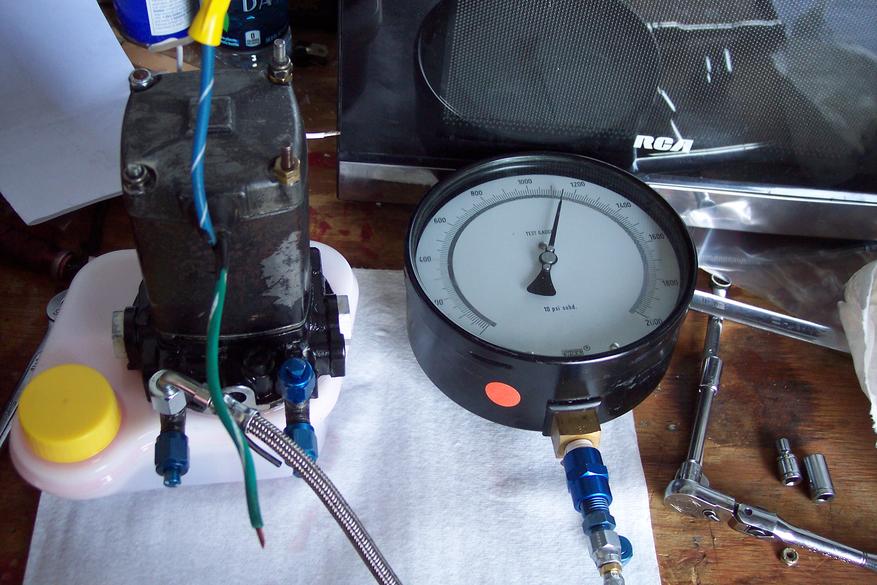 AFt AFt
After mounting the pump on the baggage bulkhead, I pressurized and
bled the entire system one landing gear at a time (and bathed myself
in MIL-5606H in the process). I did the low pressure (DN) side
first, then the high pressure (UP). I used my old battery to run the
pump until I splice the wiring to the existing relays which I intend
to leave back in the trunk. I'm taking that long flexhose back to
the hose shop to have it shortened for aesthetic purposes. (That's
the transponder antenna in the upper-left, if anybody was
wondering):
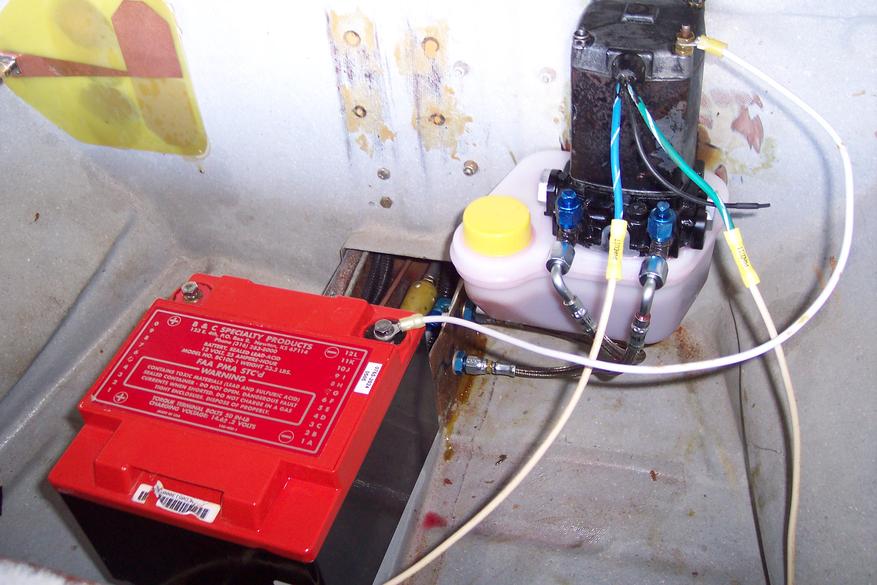
I discovered today that the 2000 PSI gauge I recently bought from
McMaster-Carr had a manufacturing defect - the pressure port was
plugged with a piece of brass. When I originally installed the gauge
I thought that plug was some kind of OHSA safety device or
something, but that turned out not to be the case. I had to drill it
and remove it with an EZ-out. Weird...
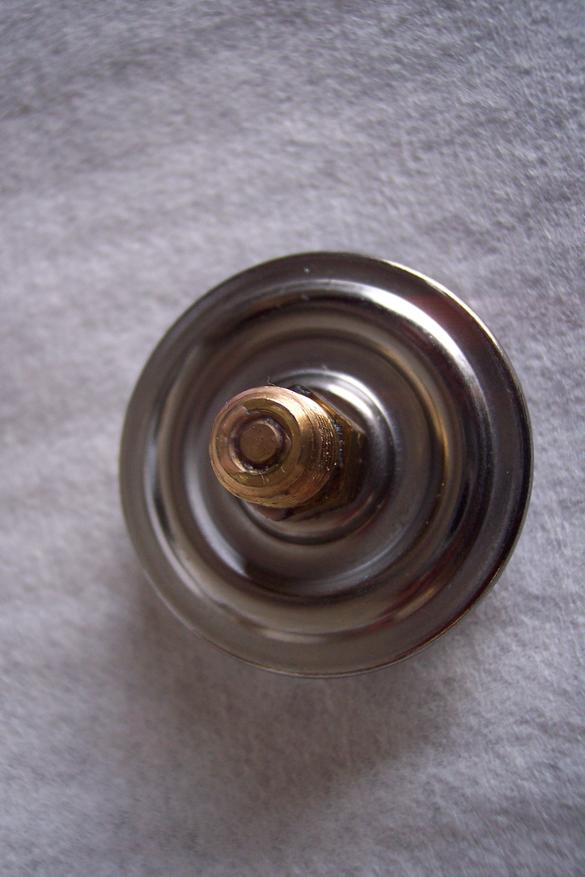
I left pressure on the LP side overnight to check for pressure
decay.

Transformed_Lancair hydraulic pump reinstallation 001.JPG
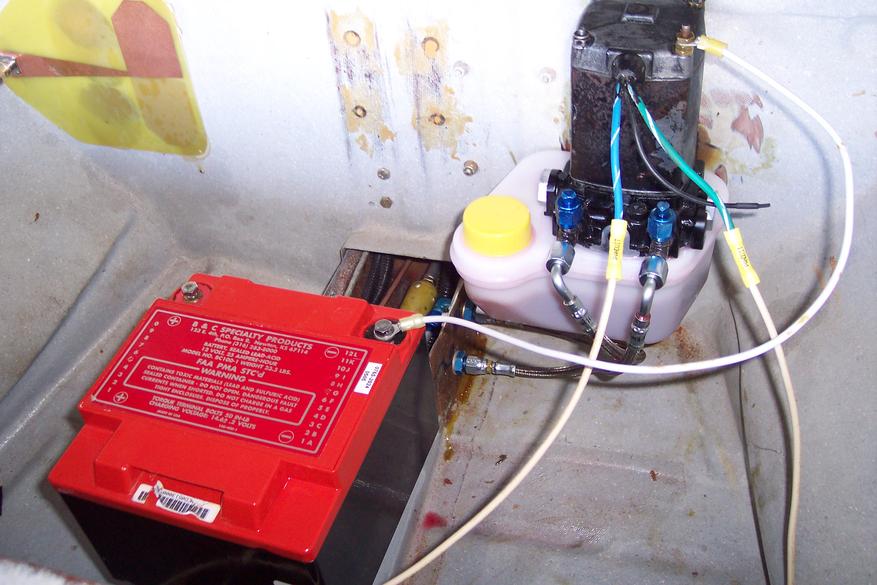
Transformed_Lancair hydraulic pump reinstallation 004.JPG
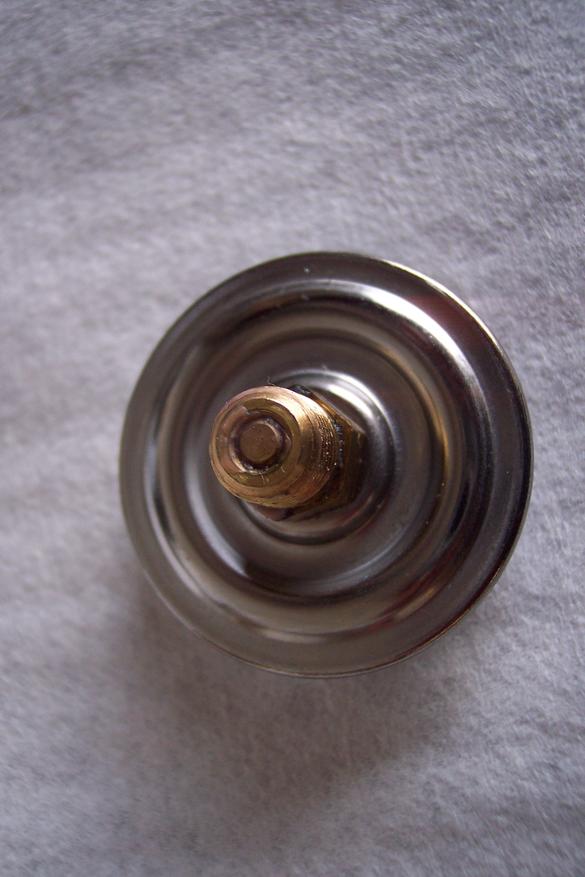
Transformed_Lancair hydraulic pump reinstallation 003.JPG
|
|